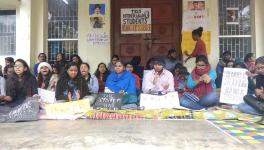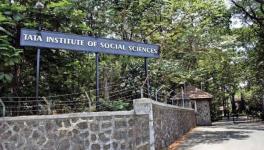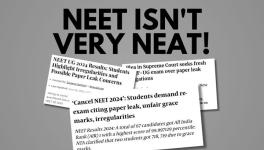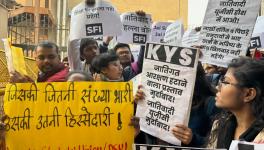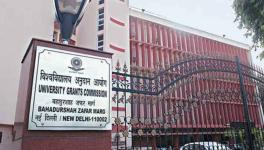AISHE Report 2017-18 Confirms the Rapid Privatisation of Higher Education Since 2013-14
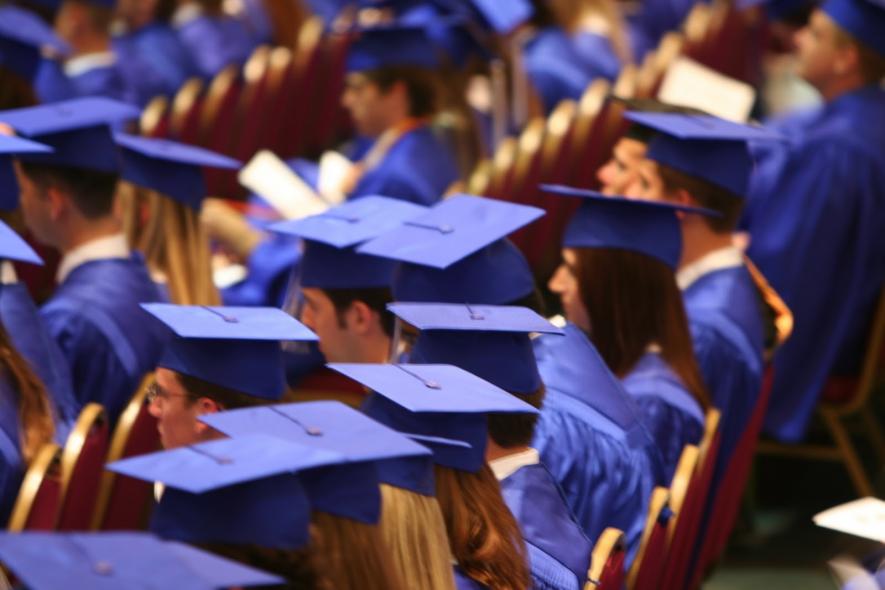
Prakash Javadekar, Minister of Human Resource Development, has released the All India Survey of Higher Education (AISHE) report for the year 2017-2018 on the second day of the Three-Day VCs’ Conference on Research & Innovation in Higher Education i.e., on July 27.
The higher education institutions have been classified into 3 broad categories:
- University and University level institutions, which are empowered to award degrees under some Act of Parliament or State Legislature.
- Colleges/Institutions, which are not empowered to provide degree in its own name and therefore are affiliated/recognised with universities.
Note: Only affiliated and constituent institutions of Central and State Public Universities have been counted as colleges. Constituent units of deemed/private universities, Off-campus centres and Recognized centres have not been counted as Colleges.
- Stand-Alone institutions (not affiliated with Universities), which are not empowered to provide degrees and therefore run Diploma level programmes. They include, Polytechnics, Post Graduate Diploma in Management (recognised by AICTE), Teacher Training institutes (recognised by NCTE), Institutes directly under the control of various Central Ministries etc.
Private Colleges and Universities have increased at a faster rate
There are a total of 903 universities in India, out of which 882 have responded (including 54 universities, which had uploaded data for AISHE 2013-14 to 2016-17). Of these, 285 universities are affiliating universities i.e., they have colleges affiliated to them. Broadly speaking, 560 universities i.e. 62 per cent are public funded universities and 343 i.e. 38 per cent, are privately managed universities, as listed in Table 1.
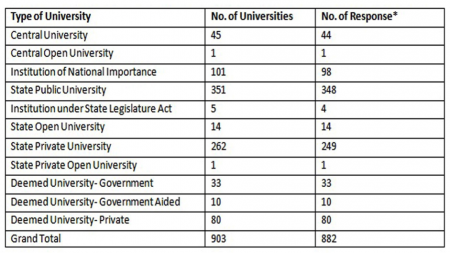
These universities have a total number of 39,050 colleges affiliated to them (38,061 colleges responded). Management-wise, 78 per cent colleges are in the private sector, in which 67.3 per cent of the all college students are enrolled. Private colleges are further categorised as private unaided colleges (64.7 per cent), which cater to 46.7 per cent of all college students, and as private aided colleges (13.3 per cent) which cater to 20.6 per cent of all college students.
A statistic which clearly shows the extent of privatisation of the higher education sector of India is, only 22 per cent of all colleges in the country are government colleges, however, these cater to 32.7 per cent of all college students, which is disproportionately large.
Further, of the 1,147 Colleges established in 2017, 941 (82 per cent) were private colleges, out of which 834 are private unaided and 107 are private aided. Whereas only 206 (18 per cent) are government colleges.
There are a total of 10,011 stand-alone institutions (9,090 have responded), they are mainly run by private sector (75.47 per cent); private unaided – 66.04 per cent and private aided – 9.43 per cent. Here, also only 24.53 per cent institutions are in the government sector, which again confirms the trend of privatisation.
AISHE Report 2013-14 and AISHE Report 2017-18
According to the AISHE Report 2013-14, out of 723 universities listed, 702 responded. Out of these, 219 (32 per cent) were privately managed. According to the 2017-18 report, privately managed universities have increased to 38 per cent. In absolute numbers, this increase is more pronounced since the total number of universities has increased from 723 to 903.
On the one hand, between 2013-14 and 2017-18 central universities increased from 42 to 45, state public universities increased from 309 to 351, and deemed universities (government and government-aided) decreased from 47 to 43. On the other hand, state private universities increased from 153 to 262. Institutes of national importance increased from 68 to 101 (between 2013-14 and 2017-18), as shown in Figure 1.
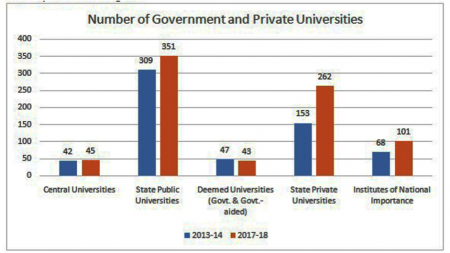
Similarly, 75 per cent colleges were privately managed (60 per cent private unaided and 15 per cent private aided) in the year 2013-14, which has increased to 78 per cent (64.7 per cent private unaided and 13.3 per cent private aided) by the year 2017-18. On the contrary, the proportion of government colleges decreased from 25 per cent to 22 per cent between 2013-14 and 2017-18, as shown in Figure 2. In absolute numbers, the decrease is starker, since the number of colleges has gone up from 36,634 to 39,050.
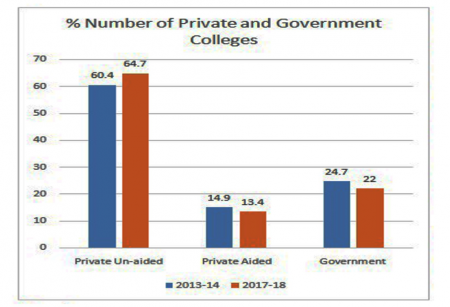
Hence, while private institutions are increasing in proportion to the total number of higher education institutions, government institutions are decreasing.
Therefore, the percentage share of enrolment in government institutions is decreasing, while that in private institutions is increasing.
Further, there has also been an increase in the enrolment of students in private colleges, from 65 per cent in 2013-14 to 67.3 per cent in 2017-18. On the contrary, there has been a decrease in the enrolment of students in government colleges, from 35 per cent in 2013-14 to 32.7 per cent in 2017-18, as shown in Figure 3.
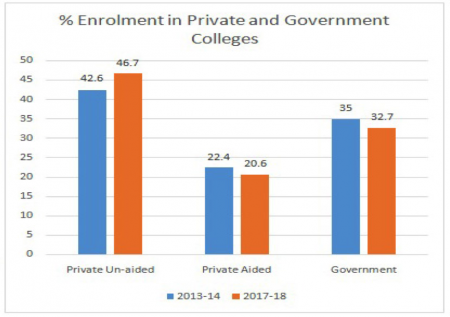
As private colleges and universities are exponentially more expensive than their government counterparts, we can conclude that the household expenditure on higher education is increasing, and effectively, the government is increasingly stepping back from its responsibility of providing affordable and subsidised higher education to the masses. Rather, it is giving it up to the market and the private businesses and trusts.
Newsclickspoke to Anita Rampal, professor at Delhi University and eminent educationist, about the trend towards privatisation of higher education. She said that this was “not at all a good development, even though the change is small.”
“The government needs to play a major role in providing more opportunities for equitable higher education, not abdicating it to the private sector, which is there mostly for commercial interests. Therefore, the courses get skewed in the direction of self-financed programmes with much higher fees limited to areas that suit the interest of the 'market', such as those in management, commerce, medicine, etc.” she added.
All this, coupled with the attacks on reservation in government institutes, replacement of grants to universities with loans from Higher Education Financing Agency (HEFA), imposition of farcical ‘autonomy’ through the schemes of ‘graded autonomy’ and ‘autonomous colleges’, replacement of University Grants Commission (UGC) with the Higher Education Commission of India (HECI), make it blatantly clear that the Modi Government is privatising and commercialising the higher education system of India.
Get the latest reports & analysis with people's perspective on Protests, movements & deep analytical videos, discussions of the current affairs in your Telegram app. Subscribe to NewsClick's Telegram channel & get Real-Time updates on stories, as they get published on our website.









